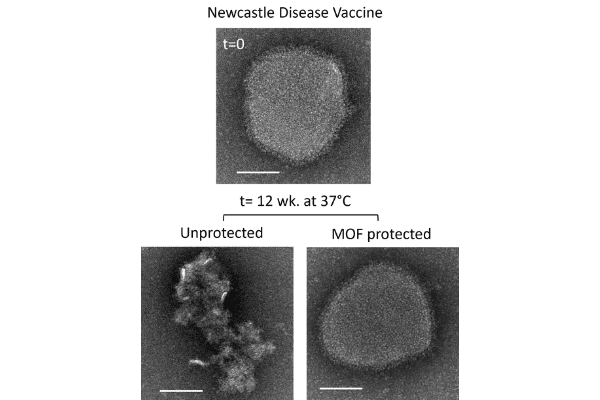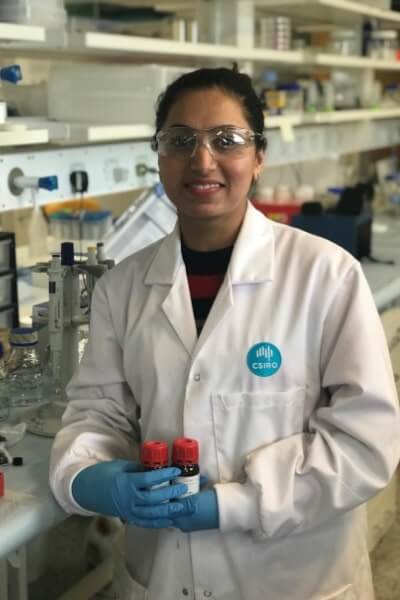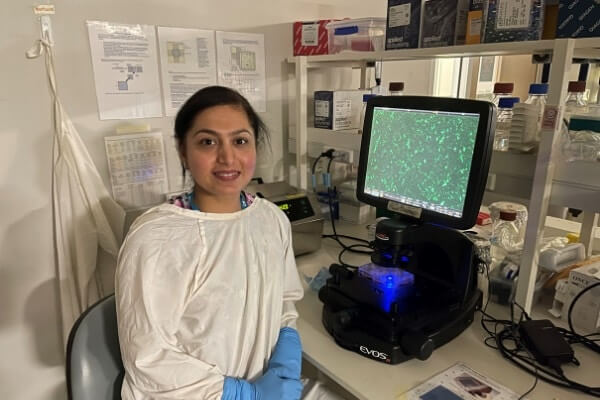As modern vaccines rely heavily on being stored in refrigerated conditions, at least 50 per cent of vaccines are wasted globally each year because of a lack of facilities and temperature control, according to the World Health Organisation.
But this could soon be a problem of the past with research coming out of Australia’s national science agency, CSIRO, that talks about new technology that does not involve refrigeration of vaccines. The research paper, published in the scientific journal Acta Biomaterialia, reported that researchers wrapped live virus vaccines with a dissolvable crystalline material called MOFs (metal organic frameworks).
It was found that these MOFs protected the integrity of the vaccines for up to 2 months and in temperatures as high as 37 degrees Celsius. Without refrigeration, the vaccines would otherwise last only a few days.
The lead author of the innovative study is CSIRO researcher and postdoctoral fellow Dr Ruhani Singh. Her research interests in advanced materials for biological and medical applications led her to join senior scientist Dr. Cara Doherty’s lab, where the new technology was being developed to protect proteins.
“The challenge of vaccine distribution and cold chain is long known, and a universal solution is much needed. Keen to extend this technology and solve real-world problems I worked in collaboration with Dr. Layton from the disease prevention and detection team to encapsulate and protect a whole microorganism – a live viral vaccine,” she told Indian Link.
“We often use the analogy of a sea urchin when we talk about MOFs protection, where its internal soft and fragile organs are protected by a hard shell outside.”

Why hasn’t this been done before, you ask? The most common strategies to date regarding vaccine storage have been the addition of stabilising agents or engineering more complex vaccines to make them more resistant to heat.
“We applied these advanced materials to vaccines for the first time,” Dr Singh said.
Over the last three years, the team had small wins that motivated them and numerous failures which pushed their resilience.
“When I could see that the technology could protect live viral vaccines much better than other additives alone, I was thrilled and kept checking and re-analysing my data to ensure it was true!”
Hailing from Chandigarh, India, Dr Singh attended Panjab University where she studied Biotechnology Engineering. Following her undergraduate degree, she migrated to Australia and experienced “world-class education”.
She completed her master’s in Engineering at the University of Melbourne followed by a PhD in Chemistry and Pharmacology from the University of Western Australia. Dr Singh joined CSIRO as a post-doctoral fellow in December 2017, where the adventure with MOFs and live-viral vaccines began.
The MOFs research focused on two different types of live viruses as proofs of concept, a Newcastle Disease vaccine designed to protect poultry and a strain of Influenza A, but can also be applied to COVID-19 vaccines.
“We are on path to translate this technology to COVID-19 vaccines and the initial results look promising,” Dr Singh revealed.

Remote areas where efficient refrigeration is not available can limit vaccination opportunities for people living in those areas. Dr Singh believes that remote locations in every country would benefit immensely from MOF-vaccine formulations.
The research also indicates that MOFs are a much simpler and cheaper alternative to refrigeration. Could they replace refrigerated vaccine storage facilities altogether?
“Yes, our proof-of-concept studies indicate this prospect,” Dr Singh said.
“However, it is a long road, we are currently working towards establishing commercial partnerships to perform pre-clinical studies.”
READ ALSO: Indian nuclear scientist and team invent new fire-retardant material




